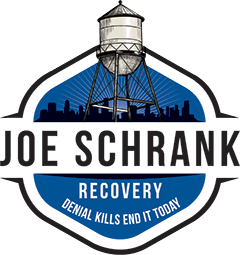Let’s talk numbers.
America spends $150 billion a year on addiction treatment. That’s billion with a B—as in, “Better hope your insurance has no idea what it’s actually paying for.”
And what do we get for that investment?
Relapse rates after traditional treatment hover between 70–90% within the first year. Statistically, you’re more likely to get into Stanford—where the acceptance rate is under 4%—than to stay sober after many rehab stays. But somehow, treatment programs still get sold like they’re a guaranteed cure, complete with yoga mats, ocean views, and laminated mantras.
While no program is perfect, some are certainly better than others. Some programs are excellent. They’re run by licensed clinicians, trauma-informed therapists, and people who understand substance use as a complex mental health issue—not a moral failure. But a large portion of the industry? It’s built on personality, hustle, and pure marketing.
A lot of these places are run by people whose main qualification is “I used to be high and now I’m not.” That’s not nothing, but it’s definitely not everything. Much of the rehab business is still operated by former drug dealers who just swapped grams for group therapy and kept the ethics of their former profession—now dressed up in Allbirds and inspirational wall quotes between pontificating platitudes and insurance fraud.
And when the treatment doesn’t work? There’s a fallback script:
You weren’t ready.
You didn’t surrender.
You need to hit a lower bottom.
One of the dirtiest secrets in the rehab industry is this built-in escape hatch: blame the consumer. The same system that doesn’t measure success, doesn’t provide meaningful aftercare, and doesn’t adapt to individual needs will still claim it’s your fault when things fall apart.
Imagine if that happened after surgery. You wake up in pain and the hospital says, “Well, we don’t track outcomes here, but you probably didn’t believe in the process hard enough.” That’s the level of accountability in most of this $150 billion industry.
If you’re looking at treatment options, don’t get hypnotized by glossy brochures, beachfront bonfires, or promises of spiritual rebirth between CrossFit and cold plunges. Ask for outcome data. If they don’t have any, what does that tell you? A site visit is totally appropriate. If it doesn’t feel right, it most likely isn’t.
If this all sounds overwhelming, I get it. I’ve lived it—from both sides and seen the game of three card Monty for decades.
That’s why I offer a free discovery sessions to help people navigate this mess. No pressure. No preachy pitch. Just honest help sorting out what’s actually useful, what’s overpriced nonsense, and what will work for you. Most likely will take some time but first session with me is free and that rule of thumb, if it doesn’t feel right, it most likely isn’t also applies to me
Because your recovery shouldn’t depend on slogans, sales tactics, or someone else’s idea of “the right way.” It should be about finding a path forward that makes sense for your life.

